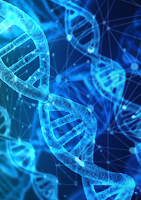- Index-
# Meaning of Growth and Development
# Factors influencing growth and Development
- Meaning of Growth and Development.
Human growth and development is a continuous and dynamic process. This process goes on throughout one's life. There are constant changes in the individual from conception to old age. These changes are very complex. Development begins at the time of conception and continues until death. The field of Human Development is a scientific study of these changes.
- Definitions of Growth and Development.
People believe that growth and development have a similar meaning. But this term has very specific and different characteristics.
Growth refers to quantitative changes such as growth in heights, weights, etc. The term growth is used for changes that can be measured in numbers and amount, e.g. Changes in weight, height, number of teeth, etc. It is easy to measure and one can easily measure the changes in heights, weight, etc.
Development refers to quantitative as well as qualitative changes such as changes in structure, functioning, or organization of processes, information, etc. Development is a series of progressive, continuous and systematic changes towards the goal of maturity. Development is a more broad term that includes growth in size, height, and weight as well as qualitative changes in the capacity of thinking, skills, and abilities. These changes are progressive which refers to the direction of the changes towards maturity. These changes continue from conception to death. They are systematic i.e. they occur in a specific order. Once the change is not possible without its prior specific change.
In the process of human development both these terms "growing" and "developing" are applicable.
Difference between Growth and Development.
Difference between Growth and Development.
Growth
|
Development
|
1] Growth refers to changes in
particular aspects of the body
|
1] Development involves an organism as a
whole.
|
2] Growth refers to change in size
resulting from the multiplication of cells or an increase in intracellular substances.
|
2] Development refers to the
maturation of structure and function.
|
3] Growth refers to the quantitative changes;
e.g. increase in height and weight, etc.
|
3] Development refers to both
qualitative and quantitative changes; e.g. changes in memory, reasoning ability.
|
4] Growth may not be always
progressive.
|
4] Development is a progressive series
of orderly and coherent changes.
|
5] Growth does not continue
through-out life.
|
5] Development is a continuous
process. It starts at conception and continues until death.
|
6] The changes caused by growth is
measurable. E.g. Growth in height and weights can be measured.
|
6] Development includes both
qualitative and quantitative changes that are not directly measured, but can be observed.
|
7] Growth may or may not bring about
development e.g. child growing in height may not show maturity and high reasoning ability.
|
7] Development is also possible
without growth. E.g. A child lagging behind in the growth of height may show very
good reasoning ability.
|
- Factors Influencing Growth and Development.
It is interesting to note that each individual is characteristically different. Any two children of the same age are not similar in their body type, skin color, posture, and behavior. Even two siblings are not exactly the same. There is a lot of diversity not only in their physical characteristics but also in their behavior. Many experts suggested that this diversity has resulted because of lots of environmental and biological factors that influence the process of development at different aspects across the life span.
Following are the factors which affect growth and development:-
- Heredity
This is an important factor that influences development from the prenatal stage. It is genetic endowment inheritance from biological parents at the time of conception. When the ovum and sperm unite, they endow the organism with a genetic makeup that influences a wide range of characteristics such as the color of skin and hair, height, weight, health, intellect, etc. Ovum and sperm called gamete cells. Each of these cells has 23 chromosomes in its nucleus. Amongst these 23 chromosomes, 22 chromosomes are called "Autosomes" and one chromosome is called "Sex chromosomes". These chromosomes are like filaments that contain a number of genes. These genes are the functional units of heredity. Each gene has its particular place and its particular function in inheritance. This arrangement of genes on chromosomes is known as "Genome" or genetic disposition.
When the ovum and sperm unite at conception, the ingredients of 23 pairs of chromosomes are provided for the new organism which will develop. When the chromosomes unite, the genes are paired i.e. every gene is one of the pairs of chromosomes is paired with the gene in another chromosome. If the paired genes are similar in their performance, the characteristics which they influence will appear in the child. If they are dissimilar, their different effects may combine to produce slightly altered characteristics.
Dominant and Recessive genes.
The genetic transmission of characteristics in human beings is a very complex process. This depends on the characteristics of genes. There are some genes which may dominate the other and are called "dominant genes". Some genes which remain present in the genotype but do not show their effect or characteristics are called "recessive genes" The recessive gene will remain and may be evident in a later generation.
The number of chromosomes donated by each parent is 23, each resulting in 23 pairs in the developing child, the grouping of these chromosomes is largely a matter of chance and explains why one child in the family strongly resembles the mother, while another resembles his father.
Heredity is also responsible for some inborn genetic defects. During the process of fertilization, there is a possibility of chromosomal mutation, such as getting an extra chromosome or getting one less chromosome or losing a part of chromosomal filament, which leads to many inborn defects and abnormalities in a child.










